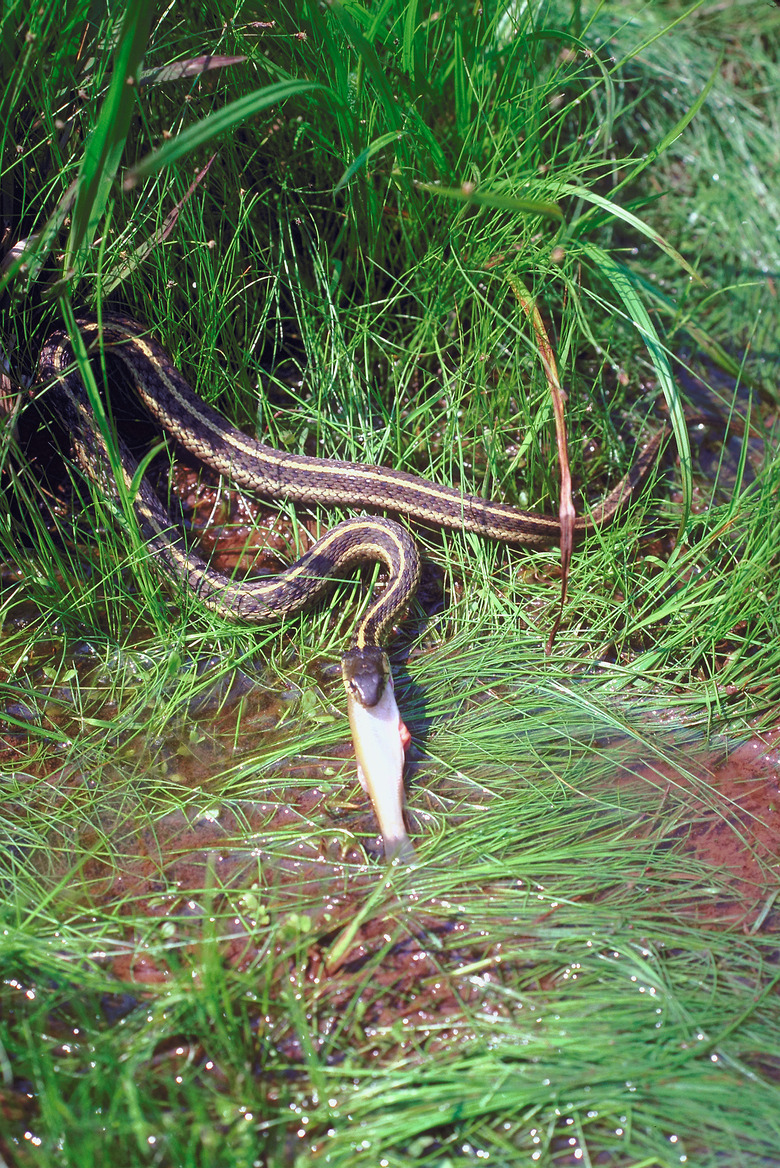The Snake Hibernation Period
Being cold-blooded (ectothermic) and thus unable to regulate their own body temperature with metabolic activity, snakes are vulnerable to low temperatures. To deal with subfreezing weather, snakes in temperate regions "hibernate" during winter, although some scientists restrict that term to warm-blooded creatures and instead refer to the overwintering dormancy of snakes as brumation.
The issue is not only that severely cold temperatures can directly kill snakes, but also that cold-induced sluggishness means the reptiles are less able to catch and digest prey and to avoid predators. All of these reasons make finding suitably insulated and hidden overwintering dens – called hibernacula – essential for snake survival in chillier climates.
Snake Hibernation: The Effects of Climate
Snake
Hibernation: The Effects of Climate
Not surprisingly, snakes inhabiting climates with more severe winter temperatures spend a larger portion of their year brumating.
Snakes in the northern United States and Canada, for example, may brumate as many as seven or eight months, whereas those in milder settings in the southern U.S. may do so only for a few weeks or a couple of months. Snakes inhabiting higher-elevation habitat also tend to brumate longer than their lowland counterparts.
The timing of winter and spring temperatures, of course, varies from year to year: Early onset of cold weather in the fall may drive snakes into their hibernacula earlier than usual, just as unusually warm autumn or early-winter weather may encourage them to remain active later into the season.
Where Do Snakes Go in the Winter? Introducing the Hibernaculum
Where Do Snakes Go in the Winter? Introducing the Hibernaculum
Depending on the species and the region, snakes use a wide variety of different hibernacula for overwintering. While they can come in many forms, snake hibernacula generally must lie below the frost line or in microclimates otherwise protected from freezing.
In hilly or mountainous terrain, for example, snake hibernacula are often situated on south-facing slopes that receive more sunlight and are thus warmer.
Access to water is also important: Some studies have suggested that desiccation is a more significant mortality factor among overwintering snakes than depletion of fat stores. Snakes may also die within their hibernacula during especially severe winters, and when predators such as skunks or badgers locate and unearth them.
Excessively warm temperatures can also actually be problematic, because they can provoke a higher metabolism in a hibernating snake and cause it to lose weight.
Snakes that overwinter individually may use small rock crevices, stumps or existing animal holes. The massasauga rattlesnake of central North America, for example, often use crayfish burrows.
Types of Snake Shelters
Types of Snake Shelters
Some snakes overwinter communally in larger shelters such as mountainside talus fields and other rock piles or underground caverns.
More than 50,000 garter snakes may overwinter together in limestone caverns in Manitoba. Such mass congregations may reflect a general scarcity of suitable hibernacula on a given landscape, and can consist of multiple snake species holing up together.
Hibernating rattlesnakes, for example, may share their winter digs with other kinds of snakes such as racers, gopher snakes and hog-nosed snakes.
While most snake species use existing shelters for their hibernacula – including manmade structures of suitable setup, such as abandoned wells or bridge trestles – some, such as the northern pine snake and the hog-nosed snakes, can dig their own burrows.
Snake hibernacula may be used repeatedly year after year, decade after decade. A study on northern pine snakes in the New Jersey Pine Barrens showed certain overwintering dens used regularly for the duration of a 26-year study, some of them annually and others left vacant for several years and then returned to.
This kind of faithfulness (philopatry, in technical terminology) to high-quality hibernacula can put snakes in danger: It's all too common, unfortunately, for people driven by misplaced fear or hatred of rattlesnakes, for example, to track down and destroy whole overwintering populations in their dens.
Activity During Brumation
Activity
During Brumation
During brumation, snakes aren't completely sacked out to the world: They're awake and to some degree active, though their movements and energy are limited. In milder temperate regions, snakes may emerge from their dens during winter warm spells to bask, though their subdued state puts them at risk of predators.
Even in higher-latitude settings, snakes can move about within the cozy haven of their hibernacula. Telemetry studies suggest, for example, that they may shift their location to warmer and warmer refuges within their den complexes as winter progresses and temperatures drop.
Entering & Exiting Winter Dens
Entering
& Exiting Winter Dens
Herpetologists refer to the movement of snakes into winter dens as ingress and movement out of them as egress. At both ends of the brumation period, there tends to be a transitional time of milling around the general overwintering site.
That's certainly often the case during spring emergence, when snakes commonly bask on warm, sunny afternoons near their hibernacula and then retreat again into them at night, sometimes for several weeks before fully departing for the season. A study on the hibernacula used by black rat snakes in Ontario showed the snakes often basked in large, old trees near their densites during spring egress.
References
Cite This Article
MLA
Shaw, Ethan. "The Snake Hibernation Period" sciencing.com, https://www.sciencing.com/snake-hibernation-period-10057157/. 28 June 2019.
APA
Shaw, Ethan. (2019, June 28). The Snake Hibernation Period. sciencing.com. Retrieved from https://www.sciencing.com/snake-hibernation-period-10057157/
Chicago
Shaw, Ethan. The Snake Hibernation Period last modified March 24, 2022. https://www.sciencing.com/snake-hibernation-period-10057157/
